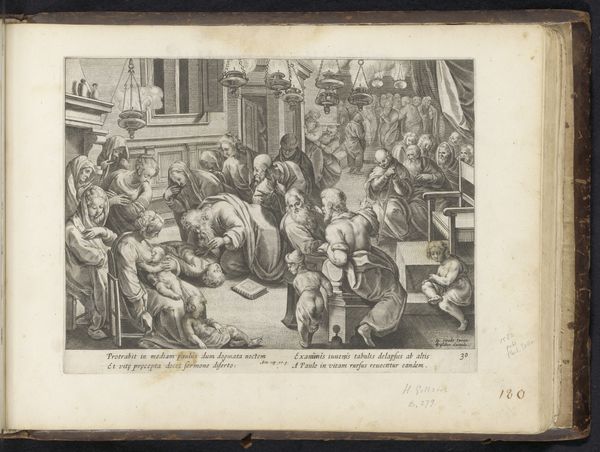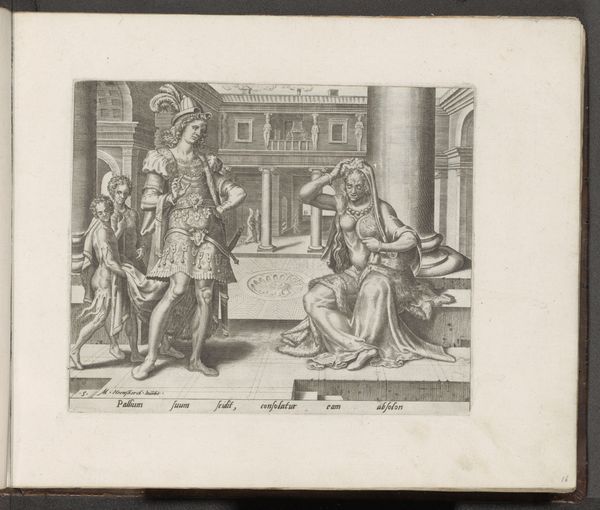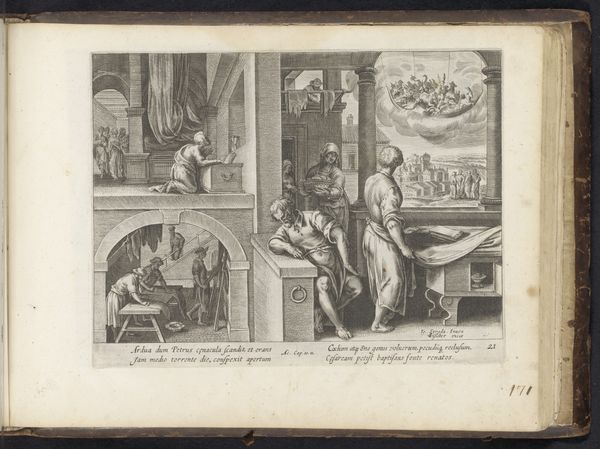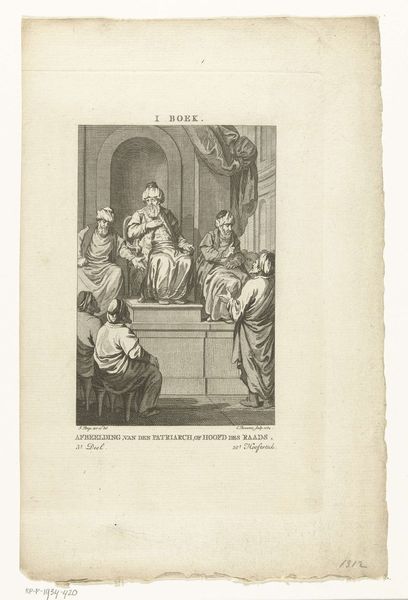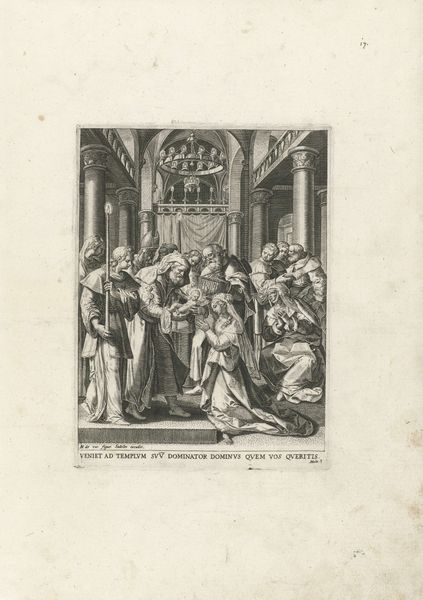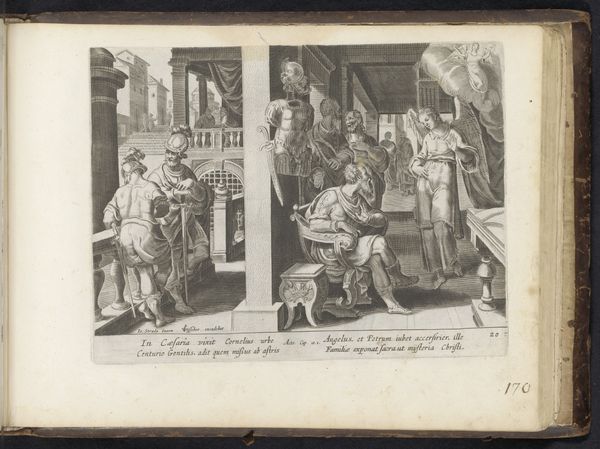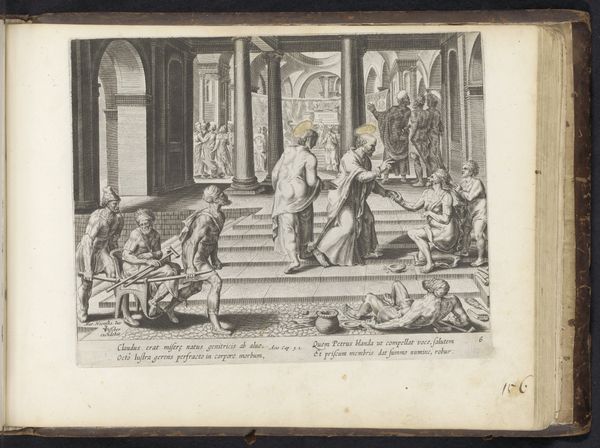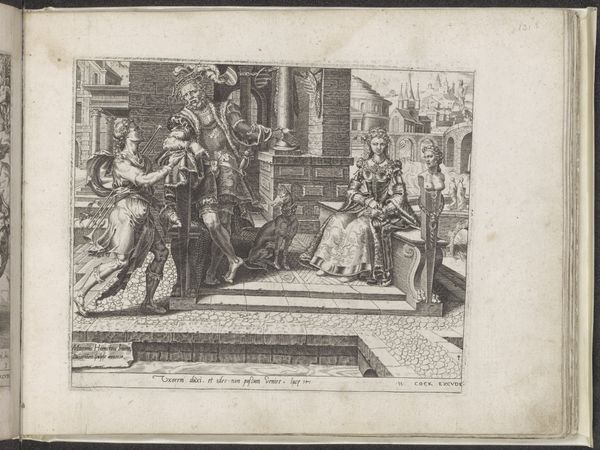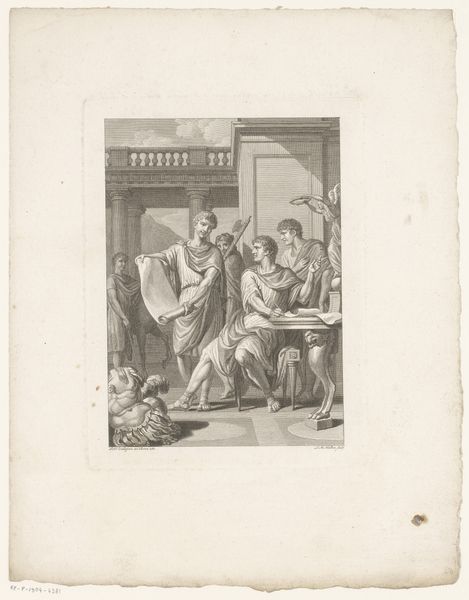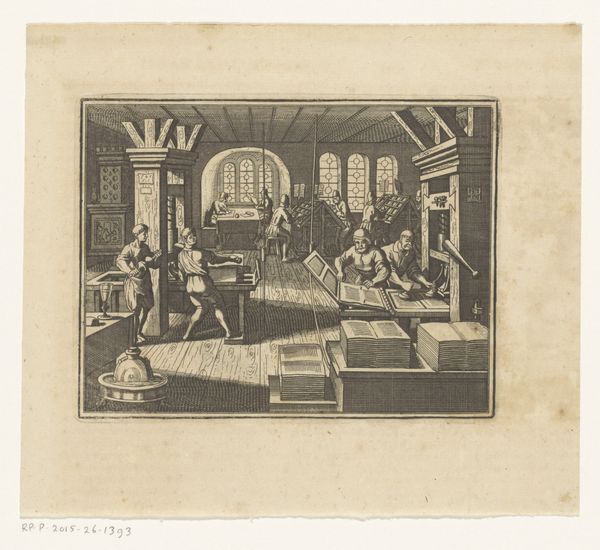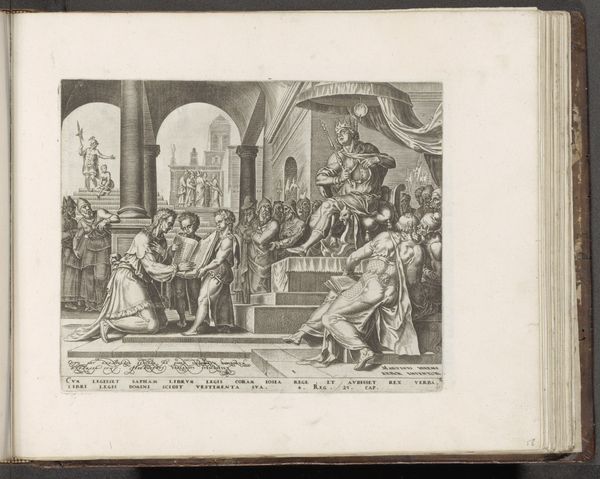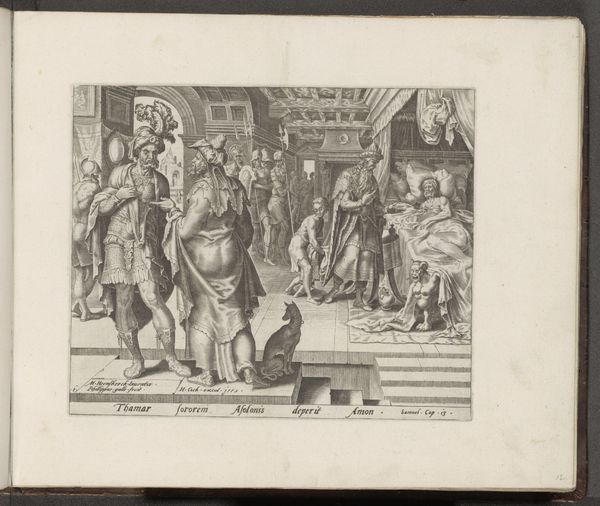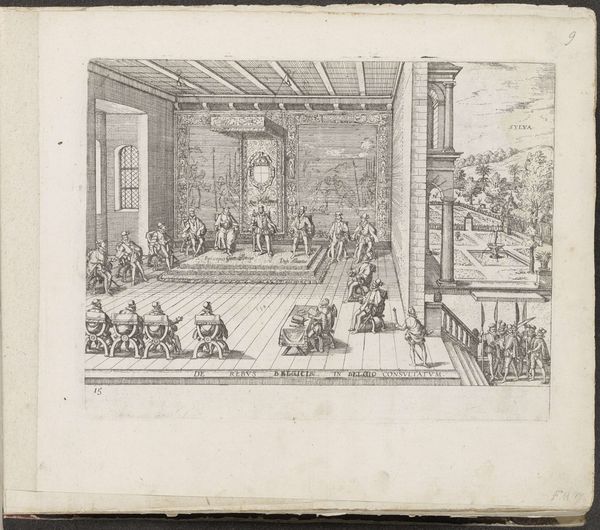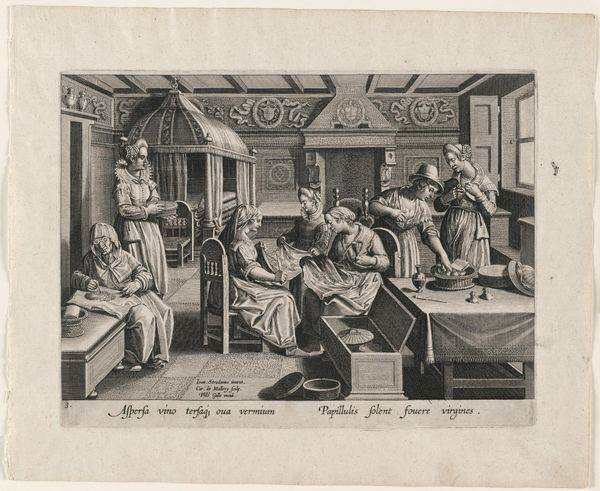
print, metal, engraving
#
narrative-art
#
baroque
# print
#
metal
#
old engraving style
#
figuration
#
history-painting
#
engraving
Dimensions: height 244 mm, width 282 mm
Copyright: Rijks Museum: Open Domain
Curator: Let's turn our attention to this 1675 engraving, "David bespiedt Batseba," or "David Spying on Bathsheba," created by Pietro Aquila. Editor: The first thing that strikes me is its intricate, almost obsessive detail. It's a dense, morally complicated tableau compressed onto this metal plate, all rendered in these sharp, unforgiving lines. Curator: Indeed, Aquila masterfully uses the engraving technique to depict a biblical scene with a real sense of drama and depth. You have David observing Bathsheba from a balcony, juxtaposed with the marching soldiers—elements meticulously placed. What’s your read on that juxtaposition? Editor: It screams power and its abuses. David, a king, elevated in space, watching a woman in a moment of vulnerability. Then the phalanx of soldiers – his power base made literal – underscores the implied threat and the inherent inequality. It’s a composition built on imbalance and violation. Curator: It is impossible to ignore. It reflects on David’s abuse of power but is it also saying something about Bathsheba's lack of agency? Editor: Absolutely. She's positioned as an object of scrutiny, denied even a gaze to return. This isn't just a depiction of a historical event; it's a stark portrayal of the gaze as a tool of domination and, perhaps even more unsettling, how often that male gaze goes unquestioned. Curator: It gives one much to contemplate as this is no passive representation of biblical narrative, but an investigation of desire, authority, and consequence, distilled through the engraver's hand. Editor: It's an era defining the male gaze on full display. We must keep discussing these issues to disrupt it! I find I can never stop unraveling it... a powerful, relevant, yet uncomfortable scene that asks questions that, unfortunately, still haunt us.
Comments
No comments
Be the first to comment and join the conversation on the ultimate creative platform.
